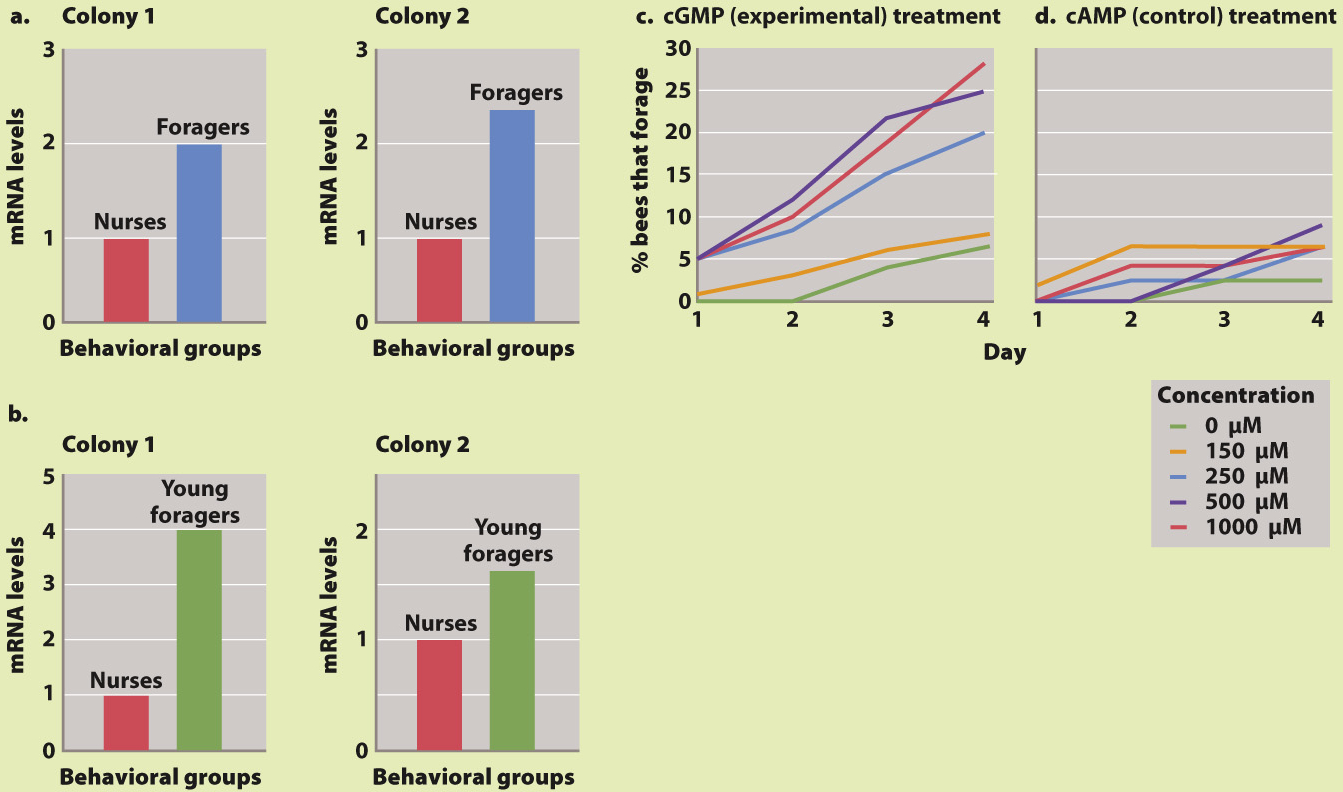HOW DO WE KNOW?
FIG. 45.8
Can genes influence behavior?
BACKGROUND In fruit flies (Drosophila melanogaster), variation at the foraging (for) gene affects feeding behavior of larvae. Two alleles of the for gene—
HYPOTHESIS Foraging in honeybees is influenced by the expression of the for gene, and nurses have lower expression levels than foragers.
EXPERIMENT 1 Levels of for mRNA were measured in honeybee nurses and foragers.

RESULTS Levels of for mRNA are significantly higher in foragers than in nurses (Fig. 45.8a). However, foragers are older than nurses, so it was unclear whether the increased expression in foragers compared with nurses is associated with differences in age or differences in behavior. Therefore, the experiment was repeated with honeybees that forage at the age at which bees are normally nurses. These young foragers also have higher for mRNA levels than do nurses (Fig. 45.8b).
EXPERIMENT 2 The for gene encodes a cGMP-
RESULTS Treatment with cGMP changed the behavior of nurses, causing them to forage (Fig. 45.8c). Furthermore, cGMP acted in a dose-
CONCLUSION The same gene that is involved in two different behavioral phenotypes in fruit flies (sitters versus rovers) is also involved in a developmental behavioral change in honeybees (nurses versus foragers). This finding suggests that a gene can have related but different functions in different organisms.
FOLLOW-
SOURCE Ben-